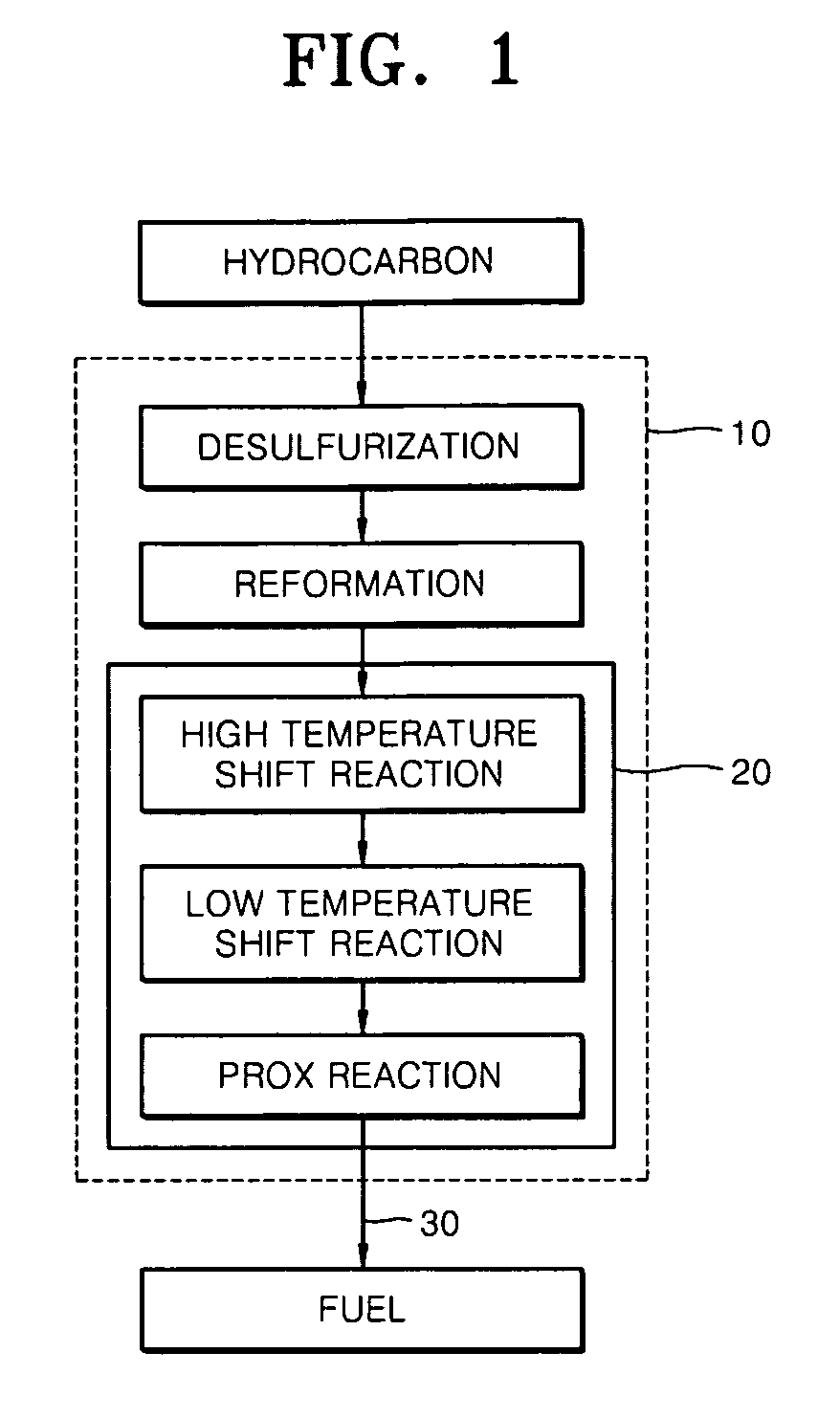Desulfurization adsorbent for fuel cell and desulfurizing method using the same
a technology of desulfurization adsorption and fuel cell, which is applied in the direction of greenhouse gas capture, chemical/physical processes, liquid gas reaction processes, etc., can solve the problems of complex operations, inability of the absorbent to remove sulfur compounds from the fuel gas, and the sulfur content of the raw fuel for hydrogen production, etc., to achieve excellent desulfurization performance and regeneration properties.
- Summary
- Abstract
- Description
- Claims
- Application Information
AI Technical Summary
Benefits of technology
Problems solved by technology
Method used
Image
Examples
example 1
[0087]166.8 g of sodium silicate (27% SiO2, 14% NaOH) and 23.1 g of NaOH were dissolved in 120 mL of distilled water to prepare a thoroughly mixed solution. Another solution containing 14.5 mL of TiCl4 and 70.7 g of HCl dissolved in 120 mL of distilled water was prepared, and this solution was mixed with the previously prepared solution by stirring. 14.6 g of KF was added to the mixed solution thus prepared, and then, 56.7 g of distilled water was further added to produce a homogeneous solution. The TiCl4 solution was added by stirring it into the alkaline solution containing NaOH, KF and sodium silicate such that the molar ratio of Si:Ti was 5.7:1, to produce a homogeneous solution, and NaOH was added dropwise thereto in order to obtain a homogeneous gel having a final pH of 11.5. This gel was placed in a high pressure reactor and was subjected to hydrothermal treatment at 200° C. for 17 hours. The hydrothermally treated product was repeatedly washed with deionized water, and then ...
example 2
[0088]404.7 g of sodium silicate (27% SiO2, 14% NaOH), 56.2 g of NaOH and 35.3 g of KF were dissolved in 120 mL of distilled water to prepare a thoroughly mixed solution. Another solution containing 244.8 g of TiCl3 (20%) and 19.8 g of AlCl3.6H2O dissolved in 120 mL of distilled water was prepared, and this solution was mixed with the previously prepared solution by stirring. 2 g of the seed produced in Example 1 was added to the above-prepared solution by stirring to produce a homogeneous solution. The TiCl4 solution was added to the alkaline solution containing NaOH, KF and sodium silicate such that the molar ratio of Si:Ti was 5.7:1, and then AlCl3.6H2O was added such that the molar ratio of Al:Ti was 0.25:1. The mixture was stirred to produce a homogeneous solution, and NaOH was added dropwise thereto in order to obtain a homogeneous gel having a final pH of 11.5. This gel was placed in a high pressure reactor and was subjected to hydrothermal treatment at 200° C. for 17 hours. ...
example 3
[0100]A desulfurization adsorbent was produced in the same manner as in Example 1, except that the hydrothermal treatment was performed for 25 hours.
PUM
| Property | Measurement | Unit |
|---|---|---|
| temperature | aaaaa | aaaaa |
| pH | aaaaa | aaaaa |
| temperature | aaaaa | aaaaa |
Abstract
Description
Claims
Application Information
 Login to View More
Login to View More - R&D
- Intellectual Property
- Life Sciences
- Materials
- Tech Scout
- Unparalleled Data Quality
- Higher Quality Content
- 60% Fewer Hallucinations
Browse by: Latest US Patents, China's latest patents, Technical Efficacy Thesaurus, Application Domain, Technology Topic, Popular Technical Reports.
© 2025 PatSnap. All rights reserved.Legal|Privacy policy|Modern Slavery Act Transparency Statement|Sitemap|About US| Contact US: help@patsnap.com



